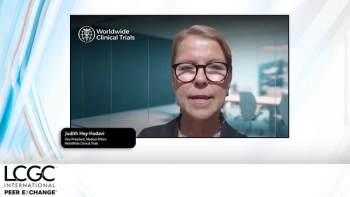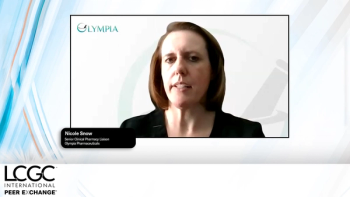
Advances in Non-Targeted and Suspect Screening to Identify Unknowns Using Mass Spectrometry
This morning session, chaired by Ann Knolhoff of the Food and Drug Administration, starts at 8:30 am and will cover different approaches for developing and implementing non-targeted and suspect screening workflows using high-resolution mass spectrometry to identify unknowns.
This morning session, chaired by Ann Knolhoff of the U.S. Food and Drug Administration, starts at 8:30 am and will cover various approaches for developing and implementing non-targeted and suspect screening workflows using high-resolution mass spectrometry (HRMS) to identify unknowns.
Knolhoff will kick off the session with her talk, “Development and Optimization of Non-Targeted and Suspect Screening Workflows for Food Safety Applications Using LC–HRMS. The presentation will highlight current strategies for non-targeted and suspect screening, including the strengths, challenges, and efforts to improve the workflows.
Next, Anthony John Williams of the National Center for Computational Toxicology of the U.S. Environmental Protection Agency (US EPA) will present a talk titled “Chemical Identification of Unknowns in High Resolution Mass Spectrometry.” This presentation will introduce tools and a combined workflow, including visualization and access, via the CompTox Chemicals Dashboard.
Neha Garg of Georgia Institute of Technology will then speak on “Molecular Networking and Spatial Metabolomics Approaches to Decipher Community Interactions in an Infectious Disease.” Here, molecular networking and imaging MS-based approaches will be highlighted that enable dereplication and direct visualization, respectively, of key phenotypically relevant molecules underlying a human disease.
After the recess, David S. Wishart of the University of Alberta will present a talk titled “Computational Tools for the Identification of the Unknowns of the Eposome.” Using newly developed software tools, Wishart will show how unknown compounds may be rapidly identified from untargeted MS studies.
Benjamin Place of the National Institute of Standards and Technology (NIST) will give the final talk, titled “Results of an Interlaboratory Study to Evaluate the Variability of Instrumental Methods for Non-Targeted Analysis and the Development of Tools to Improve Comparability of Non-Targeted Analysis Results.” Researchers at the NIST have established an interlaboratory study to evaluate the use of a solution of known chemicals for the evaluation of relevant method-specific parameters and the development of a computational tool for evaluating differences and similarities between two or more non-targeted analysis methods.
This session will be held in Room 115B.
Newsletter
Join the global community of analytical scientists who trust LCGC for insights on the latest techniques, trends, and expert solutions in chromatography.





